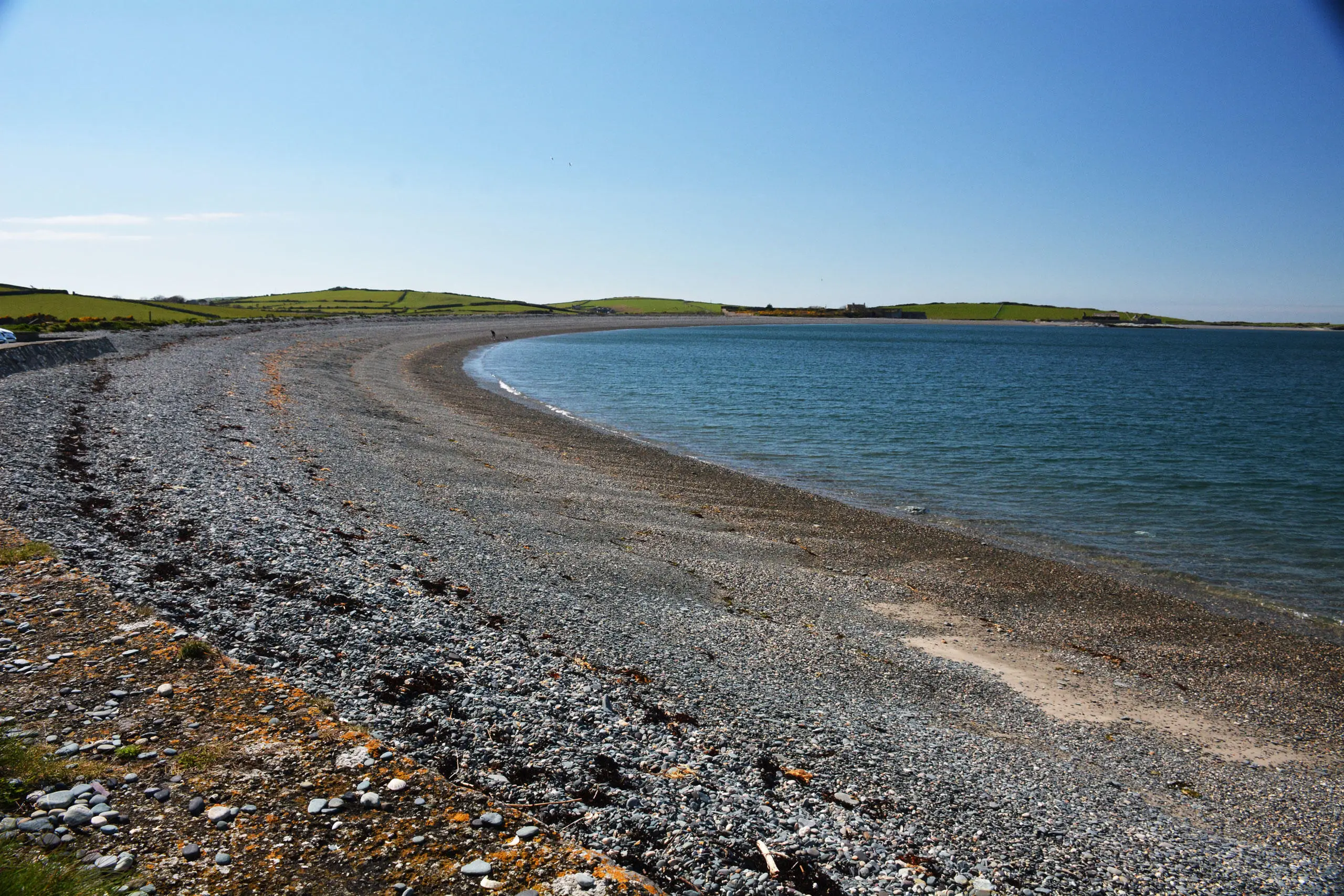Start out at Cemlyn North Wales Wildlife Trust Reserve, one of Anglesey’s busiest wildlife hotspots. Sheltered from the sea by a sweeping shingle ridge, the large saltwater lagoon is bursting with life.
Rare coastal plants like sea kale, sea campion and yellow horned poppy grow on its rocky edge, while its waters are a haven for wildfowl and wading birds (the best time to see these is in winter).
But the annual highlight comes between May and July when thousands of terns arrive at the lagoon’s islands to breed. These include the only nesting colony of rare sandwich terns in Wales, which makes up around 20% of the bird’s total UK population. Viewing points on the shingle bank give you a front row seat for the terns’ fascinating courtship displays, where the strutting males give gifts of fish to their prospective mates.
From Cemlyn Bay head east to the village of Tregele, joining the A5025 eastwards. A mile or so after Amlwch, turn left onto the minor road to the dramatic headland at Point Lynas (there’s parking at Llaneilian near the caravan park).
Jutting out into the sea on Anglesey north-eastern extreme, it’s one of the island’s best spots for wildlife watching. In the sky, you can spot seabirds like Manx shearwaters, skuas, puffins and guillemots, while the sea is home to sleekly coated seals, porpoises and even the occasional dolphin.
From here, it’s a short hop back to Amlwch for lunch.
Lunch: Blueberries, Amlwch, for paninis, sandwiches and homemade cakes.
Then head south on the A5025/B5110 to Brynteg, turning left in the centre of the village onto the B5108. Follow this B road for about half a mile, taking the second turning on your right on a minor road to follow the signs to Cors Goch North Wales Wildlife Trust and National Nature Reserve (there’s limited roadside parking next to the main entrance).
This Site of Special Scientific Interest, a mix of fen, heath, marsh and woodland, supports a huge variety of plant and animal life. Criss-crossed with paths and raised boardwalks, a stroll here reveals plenty of surprises. Depending on when you visit, you might see insects like small pearl-bordered fritillary butterflies, golden-ringed dragonflies, damselflies and 250 species of moths.
Other flying residents include marsh warblers, grasshopper warblers, sedge warblers and reed buntings, while water voles, adders and great crested newts can be found at ground level. The vegetation is just as vibrant, with a wonderful collection of wild orchids, pale dog-violet, marsh gentian and even some carnivorous plants making an appearance.
Head back to Brynteg and continue straight ahead through the village. Follow the road for a couple of miles and turn left at the hamlet of Maenaddwyn to reach the little village of Capel Coch. Park in the village and find the track next to a white cottage that leads to Cors Erddreiniog National Nature Reserve, the largest of Anglesey’s fens and one of the most important habitats on the island (what3words.com location: loose.hedgehog.adopters).
Made up of reedbeds, heath, woodland and small lakes, it’s home to an astonishing range of plant and animal life, some of it found in only a few other places in the UK. Numerous varieties of orchid grow here, including the unusual fly orchid (so-called because of its insect-mimicking flowers). You’ll also find plants like carnivorous sundew, rare stonewort, great fen sage and bog myrtle, plus hen harriers, lapwings, toads, otters and many more animals and birds.


